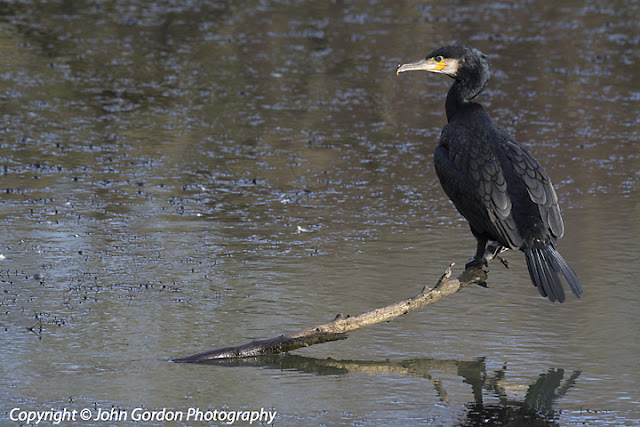Dec 7-10 2015 Brockweir Wye Valley UK. Mainly overcast with sunny breaks 10c
As a child I must have walked and driven the lanes around Brockweir and Hewelsfield thousands of times. Back for a Christmas visit I wonder where the past fifty years have slipped by! No matter, life goes on.
Because of the steep hillsides I never owned a bike and never even rode one until I was well into my twenties, even today I am not that good a rider. If you see me on Iona Jetty, best move over or i'll likely land up joining the wigeon and scoters!
 |
Brockweir. Ancient hedgerows and open fields offer the perfect haven for a wide variety species. Offas's Dyke runs through the village.
|
In the winter of 1963 there was ten feet of snow and we had to take a sled to the village for groceries. The old post office store is now closed replaced by a community run co-operative.
I must have seen birds on my travels but really I was more drawn to the river. I used to spend hours waiting for a fish to bite and in between I would watch a Kingfisher or a water vole, ask to name any of the other birds and I would be nonplussed. I don't fish anymore, I came to the realization that it was far too an invasive a pastime. Bird watching or birding leaves less of a footprint or so we like to think. There are many philosophical arguments about birders flying around the world just to tick birds or burning fossil fuels to drive across Canada on a "Little Big Year" like I did this summer.
Eventually the sun broke through, always a bonus at this time of year, just enough to catch an inquisitive Chaffinch.
 |
| Chaffinch. A common bird that comes to the feeder or feeds on fallen fruit and berries. In the autumn Chaffinches often flock with Yellowhammers and Sparrows |
 |
The Great Tit.
A common visitor to gardens and feeders. Gardeners should be particularly grateful to the Great Tit as one study estimated that a pair caught 7000-8000 caterpillars and other insects for their brood over a three week period. |
 |
| The Nuthatch can often be heard before it is seen. |
 |
Goldfinch
As exotic as any bird anywhere the world, Goldfinches were often trapped by Victorians and sold in markets as cage birds.
***** |
There is a cider apple orchard at the end of the lane and many birds are attracted the fallen fruit.
 |
Blackbird
The Blackbird can be found in most Hedgerows where it is often accompanied by a mate. It is the most common resident bird in the UK. The Blackbird is a very wary, this one is feeding on crab apples. |
 |
| Chaffinch feeding on ripe apples. |
Walking to the store I notice a Common Buzzard on a tree branch, its eyes cast down scanning the fields for a rabbit or vole. I take a few shots from a distance and then the bird is airborne and sparring with a Rook. Rooks have white patches on the face and at the base of their long bill.
When rooks congregate to feed there is an established peck or pecking order. Pigeons and domestic fowl also do it to establish a social hierarchy. This ensures the highest ranking birds survive in lean times.
 |
| A Common Buzzard and Rook spar in the skies above Brockweir. |
 |
| Front view of the colourful breast of a Fieldfare feeding on crabapples. Fieldfares are unusual in the thrush family in that they nest in colonies. They very seldom nest in Britain preferring Scandinavia and the Russia Steppes. |
 |
| A rear view of the Fieldfare with it's distinctive gray rump. |
As I was photographing the Fieldfare a Green Woodpecker flew into a tree about one hundred feet away. It was another 'Lifer' the second of the trip and a welcome and unexpected sighting.
 |
| Green Woodpecker (female) |
As I continued my walk to pick up the paper and some freshly baked bread I came across a pair of Pied Wagtail running across the old post office roof. The warmth had produced a hatch of insects and the wagtails were making the most of it. There were even a few Butterflies around.
 |
| Pied Wagtail on the old post office roof. |
Haven't been birding for a few days now but this morning as I opened the curtains a pair of Blue Tits were feeding on insects draw to the bright yellow flowers of a Forsythia. I watched for several minutes until one of the birds seemed to spot me and in a flash they were gone.
Some distant grainy ID shots
 |
| Redwing, the smallest of the thrushes. |
 |
| Mistle Thrush, the largest UK thrush. |
 |
| Mistle Thrush. |
More info
Offas's Dyke and the
"It's never too late to start birding"
John Gordon
Langley/Cloverdale
BC Canada
Disclaimer
While management has the greatest respect for the English language this writer realizes his grammar is a bit dodgy and hopes the reader will forgive him his errors.

















































